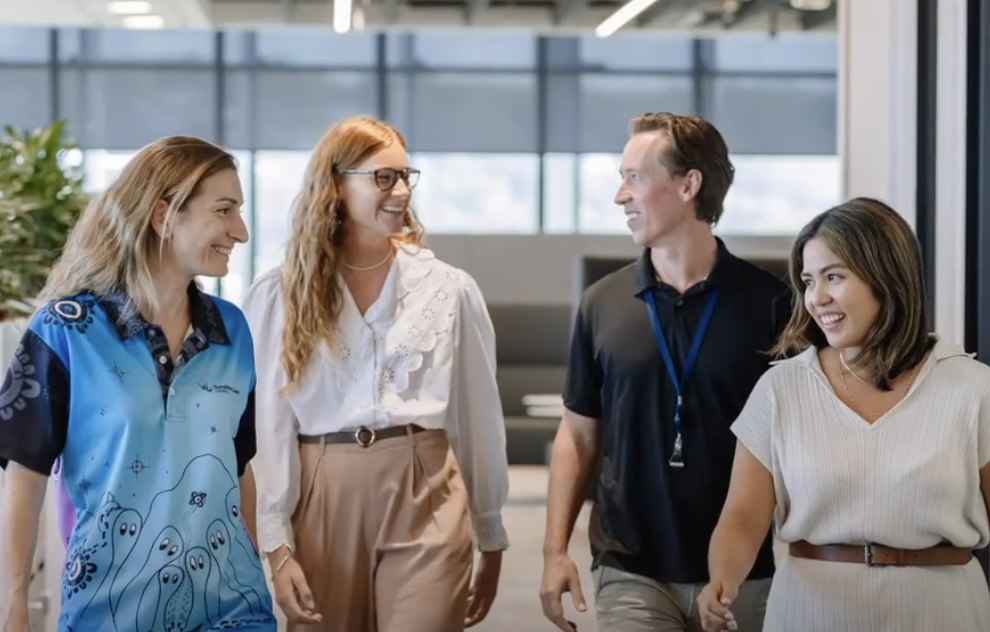
The friendly face at your local council office, the worker maintaining your neighbourhood park, the librarian helping you find a book—they're all just trying to do their jobs.
But increasingly, these essential community workers are facing something that would have been unthinkable just a few years ago: violence and abuse from the very people they serve.
Sunshine Coast Council has become the latest to sound the alarm, revealing a disturbing pattern that's emerging across Australia's local government sector.
The shocking reality on the Sunshine Coast
Between January and August this year alone, Sunshine Coast Council recorded a staggering 73 incidents of aggressive and violent behaviour towards their staff. To put that in perspective, that's nearly matching the 66 incidents reported for the entire year of 2023.
But it's not just the numbers that are concerning—it's the escalation. Physical assaults have jumped from zero in 2023 to five incidents so far this year, while verbal abuse has risen from 14 to 20 incidents over the same period.
'These are not isolated incidents. They are serious, and they are unacceptable.'
The violence isn't limited to one department either. As CEO John Baker explains, it's 'happening across the organisation, from customer service to parks and gardens, libraries, roads, waste, community facilities, contractors and even volunteers.'
This isn't just a Sunshine Coast problem
What's happening on the Sunshine Coast reflects a disturbing national trend. Safe Work Australia reports a 56 per cent increase in serious workers' compensation claims for assault and workplace violence over the past five years, with more than 65,000 accepted claims for workplace violence and assault over the last decade.
National workplace violence statistics
8 million Australians (41 per cent) have experienced at least one incident of violence since they were 15 years old
Clients and customers were the most common source of work-related violence
The most common behaviours were angry or hostile behaviour, shouting and swearing, and intimidation and insults—though these 'can still represent significant workplace risks, particularly if they are prolonged or frequent'
The pattern is clear: public-facing workers across Australia are bearing the brunt of increased community aggression, and local council employees are particularly vulnerable.
The COVID connection: When trust in government fractured
Dr Emily Moir, a criminology expert at the University of the Sunshine Coast, points to a troubling legacy of the pandemic years. 'What we have seen nationally across Australia is a rise in anti-government beliefs,' she explains.
'During the COVID-19 pandemic, government-implemented public health measures were introduced, including the lockdowns. Some people in the community saw these measures as really draconian, so local council workers would be seen as representatives of the government and therefore vulnerable to different types of harassment and abuse.'
This shift in attitude towards government authority has had lasting effects. Council workers, who are often the most accessible face of government services, have found themselves targets for broader frustrations and anger that have little to do with their actual work.
Fighting back with training and technology
Sunshine Coast Council isn't taking this lying down. They've implemented a comprehensive response that other councils are watching closely:
Security measures: Guards have been deployed where needed, and body-worn cameras are being used as both deterrents and evidence-gathering tools.
De-escalation training: Staff are learning techniques to calm tense situations before they explode into violence or abuse.
Immediate reporting: Workers are encouraged to report incidents straight away, creating a clear picture of the scope of the problem.
Support systems: The council is working with unions and safety experts to ensure staff feel protected and supported.
Tom Rivers from The Services Union calls the council's response 'a fantastic first step,' but emphasises the need for ongoing vigilance. 'It shouldn't just be that it's after these incidents are happening or that there's a rise in these incidents—they need to be actively trying to lower staff risks.'
What this means for you as a resident
These security measures might change how you experience council services. You might notice:
- Security guards at council offices
- Staff wearing body cameras during certain interactions
- Different procedures for handling complaints or disputes
- Possible delays as staff prioritise their safety
Did you know?
What does this mean for you?
If you need to visit your local council office or interact with council workers, you might encounter new security measures. These aren't there to intimidate residents—they're designed to protect the workers who serve your community. Your patience and understanding will help ensure these essential services continue to operate effectively.
The ripple effects extend beyond inconvenience. When public servants feel unsafe, it affects their ability to serve the community effectively. Some may leave their jobs, creating service gaps. Others may become less approachable or helpful, changing the nature of the relationship between councils and residents.
The human cost
Behind every statistic is a person—someone's parent, partner, or friend who simply wants to go to work and serve their community without fear. The psychological impact of workplace violence extends far beyond the immediate incident.
Safe Work Australia emphasises that 'employers and PCBUs should be talking to workers about these hazards and implementing effective and reliable control measures to prevent and respond to violence and aggression by others at the workplace'.
Dr Moir suggests practical strategies that could help: 'If they are occurring mostly when council workers are out by themselves, then having council workers go out in pairs or groups may also serve as a safety measure.'
Building bridges, not barriers
The irony is stark: the very people working to improve community infrastructure, provide essential services, and solve local problems are increasingly under attack from community members. This creates a vicious cycle where defensive measures make services less accessible, potentially fueling more frustration.
How you can help create safer interactions
- Approach council interactions with patience and respect
- Remember that frontline staff often can't control policy decisions
- If you're frustrated, ask to speak to a supervisor rather than taking it out on the first person you encounter
- Report any aggressive behaviour you witness towards council workers
- Support your local council's efforts to protect their staff
CEO John Baker's appeal resonates: 'I hope with our community's help and support we can work together to improve the situation. Kindness and respect are paramount.'
Looking ahead: A community responsibility
The solution isn't just about security guards and cameras—it's about rebuilding the social contract between communities and their public servants. This requires recognition that local government workers are neighbours, not adversaries, and that treating them with respect benefits everyone.
Other councils across Australia will be watching the Sunshine Coast's response closely. The measures being implemented there may become the new standard for protecting public sector workers nationwide.
The question remains: will these security measures become a permanent feature of local government, or can communities rediscover the mutual respect that makes such protections unnecessary?
As residents, we all have a role to play in ensuring that the people who keep our communities running can do so safely and with dignity.
What's your experience with local council services? Have you noticed changes in how your local council operates, and what do you think would help improve the relationship between councils and communities?
Original Article
https://www.abc.net.au/news/2025-10-08/rising-violence-sunshine-coast-council-workers/105863164
New report on workplace and work-related violence and aggression in Australia now available | Safe Work Australia
Cited text: · Using ABS and People at Work survey data and insights from other sources, our new report further examines this trend to provide a view of the preval...
Excerpt: What's happening on the Sunshine Coast reflects a disturbing national trend. Safe Work Australia reports a 56 per cent increase in serious workers' compensation claims for assault and workplace violence over the past five years
https://www.safeworkaustralia.gov.a...olence-and-aggression-australia-now-available
Workplace and work-related violence and aggression in Australia report | dataswa
Cited text: From 2017-18 to 2021-22p, there was a distinct 56 per cent increase in the number of serious workers’ compensation claims (involving at least one week away fr...
Excerpt: What's happening on the Sunshine Coast reflects a disturbing national trend. Safe Work Australia reports a 56 per cent increase in serious workers' compensation claims for assault and workplace violence over the past five years
https://data.safeworkaustralia.gov.au/report/work-related-violence-aggression-australia
Workplace and work-related violence and aggression in Australia report | dataswa
Cited text: There were 53,139 accepted workers’ compensation claims for being assaulted by a person or persons, and 12,721 accepted claims for exposure to workpla...
Excerpt: more than 65,000 accepted claims for workplace violence and assault over the last decade
https://data.safeworkaustralia.gov.au/report/work-related-violence-aggression-australia
Workplace and work-related violence and aggression in Australia report | dataswa
Cited text: · The ABS PSS estimates 8 million Australians (41 per cent) have experienced at least one incidence of violence since they were 15 years old.
Excerpt: 8 million Australians (41 per cent) have experienced at least one incident of violence since they were 15 years old
https://data.safeworkaustralia.gov.au/report/work-related-violence-aggression-australia
New report on workplace and work-related violence and aggression in Australia now available | Safe Work Australia
Cited text: Clients and customers were the most common source of work-related violence.
Excerpt: Clients and customers were the most common source of work-related violence
https://www.safeworkaustralia.gov.a...olence-and-aggression-australia-now-available
New report on workplace and work-related violence and aggression in Australia now available | Safe Work Australia
Cited text: · When it comes to specific behaviours, Angry or hostile behaviour, Shouting and swearing, and Intimidation and insults had the highest number of repo...
Excerpt: The most common behaviours were angry or hostile behaviour, shouting and swearing, and intimidation and insults—though these 'can still represent significant workplace risks, particularly if they are prolonged or frequent'
https://www.safeworkaustralia.gov.a...olence-and-aggression-australia-now-available
New report on workplace and work-related violence and aggression in Australia now available | Safe Work Australia
Cited text: Employers and PCBUs should be talking to workers about these hazards and implementing effective and reliable control measures to prevent and respond t...
Excerpt: Safe Work Australia emphasises that 'employers and PCBUs should be talking to workers about these hazards and implementing effective and reliable control measures to prevent and respond to violence and aggression by others at the workplace'
https://www.safeworkaustralia.gov.a...olence-and-aggression-australia-now-available







